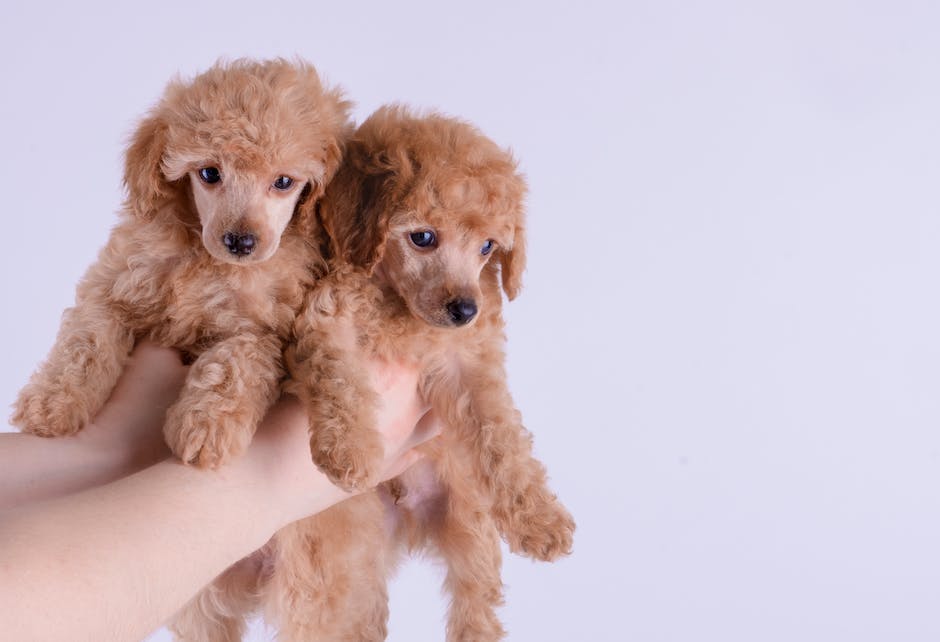Poodle vs Doodle: A Comprehensive Guide
As potential or current dog owners, understanding the breed of your choice is as crucial as it is intriguing. This entails delving deep into the lineage, specific traits, qualities, and unique needs of the dog breed before making a decision. Focusing on Poodles and Doodle breeds, this discourse invites you on an intellectual journey to comprehend these delightful breeds better. Poodles, regarded for their intelligence and elegance, present a great pet choice rich with history and pedigree. Doodles, on the other hand, represent a newer classification of dogs known for their lovable nature and hypoallergenic coats. Gaining insights into these breeds will not only arm you with valuable knowledge but will also guide you in making an informed pet choice.
Understanding Poodles
Origin and History of Poodles
Poodles are originally from Germany, where they were used as a water retriever. Especially popular in France, they are often associated with French culture. The breed comes in three sizes: Toy, Miniature, and Standard, all of which have the same build and proportions. Standard poodles were the first type, and breeders created the smaller versions later.
Physical Traits of Poodles
Poodles are known for their distinctive curly or corded coats, which come in a variety of colors. The texture and length of the poodle’s coat protect them in harsh weather conditions. They’re intelligent dogs with a lean, muscular build. Their eyes are typically dark and oval-shaped, imbued with an alert and intelligent expression.
Temperament and Personality of Poodles
Poodles are renowned for their intelligence, ranking second only to Border Collies in terms of trainability. They are energetic, eager to please, and quick learners, making them excellent in various roles such as guide dogs, service dogs, or in dog sports. Despite their intelligence, they can become bored if not sufficiently stimulated or exercised. They are also social dogs that get along well with both people and other animals.
Health Issues among Poodles
Poodles generally live long lives, but they are prone to certain medical conditions, including hip dysplasia, eye disorders, and certain skin conditions. They are prone to obesity and need to be watched for overeating. Regular vet check-ups and proper diet can help prevent some of these health issues.
Poodles as Pets
Poodles can adapt to different living situations, from apartments to large homes with yards. But, regardless of the living situation, they need daily exercise to remain healthy and engaged. Their dense curly coats also require routine grooming to prevent matting. Poodles are often a good choice for allergy sufferers because they tend to be more hypoallergenic than many other breeds.
Common Misconceptions and Lesser-known Facts about Poodles
Despite the stereotype of poodles as fussy or pampered pets, they are in fact versatile working dogs at heart. Another common misconception is that poodles always have fanciful, ‘pom-pom’ haircuts. In reality, this haircut style was developed to keep the dogs warm while allowing them to move easily through water.
Understanding Poodles and Doodles
The term “Doodles” is commonly used to denote a crossbreed between a poodle and another breed of dog. This includes well-known breeds such as Labradoodles and Goldendoodles, which are a mix of Labrador Retriever and Poodle, and Golden Retriever and Poodle respectively. The intention behind such hybridization is often to combine the Poodle’s low-shedding coat with the attractive characteristics of the other breed. It’s important to bear in mind that, as hybrids, Doodles can display more variable traits than Poodles. Not all Doodles might inherit the hypoallergenic coat of the Poodle parent. Their behavior, influenced by either parental breed, is more unpredictable but may include the high intelligence and trainability of the Poodle or the recognizable traits of the alternate parent breed.

Introduction to Doodles
Delving Deeper Into Doodles: Beyond Their Cute Appearance
In the dog world, the term ‘doodle’ signifies breeds that are a result of cross-breeding a Poodle with another type of dog. Labradoodles and Goldendoodles are among the most popular Doodle breeds. These breeds have been created to combine the Poodle’s hypoallergenic nature with the appealing attributes of the other breeds, which can range from the Labrador Retriever’s gentleness to the Golden Retriever’s friendly demeanor. Despite their adorable appearance, it’s crucial for potential pet parents to realize that the characteristics of Doodles can significantly vary, embodying traits from either parent breed in unpredictable measure.
History of Doodles
While poodles have been around since at least the 15th century, doodles are a relatively recent phenomenon, with the first intentional doodle breed – the Labradoodle – being developed in Australia in the late 1980s. The goal was to cultivate a dog type that would possess the trainability and guide-dog capabilities of a Labrador with the hypoallergenic hair of a poodle, making them suitable for owners with allergies. Goldendoodles, as another example of a doodle breed, arose in North America around the same time, following the trend of breeding Poodles with other popular breeds.
Physical and Personality Traits
Doodles typically inherit the curly, hypoallergenic coat of their Poodle parent, making them a great choice for individuals or families with allergies. However, their physical appearance and size can vary enormously depending on the non-Poodle breed mixed in and the specific genetics inherited from each parent. Labradoodles and Goldendoodles, for example, can range anywhere from 15 to 100 pounds.
Personality-wise, most doodles are known to be friendly, energetic, and intelligent, taking after both their Poodle and non-Poodle parents. They’re typically highly sociable animals that get along with people and other pets and have a keen desire to please, often making them highly trainable. However, like other dog breeds, individual personalities can vary.
Health and Care
Doodles are generally healthy, but like all breeds, they’re prone to certain genetic health conditions. Both Labradoodles and Goldendoodles, for example, can be susceptible to hip and elbow dysplasia, eye diseases, and certain skin conditions. It’s crucial to ensure that a doodle puppy is sourced from a reputable breeder who screens for these conditions.
Doodles require a substantial amount of physical and mental stimulation due to their active and intelligent nature. They’ll require daily walks, playtime, and regular opportunities to run freely in a secure area. Without regular stimulation, doodles can become bored and potentially develop destructive behaviors.
The Doodle vs Poodle Debate
Although the Poodle and Doodle share genetic material, they do have some significant differences. Poodles come in three sizes (standard, miniature, toy), are highly intelligent, and tend to be quite dignified and somewhat reserved, especially around strangers. They’re also hypoallergenic, making them a good choice for allergy sufferers.
Doodles, given their mixed breed characteristic, can vary greatly in size and disposition depending on their non-poodle parentage. Doodles are generally regarded as being more outgoing and friendly compared to their Poodle counterparts, but they may or may not be hypoallergenic depending on the specific mix. While a Doodle may shed less than other breeds and be a good choice for those with allergies, they may not be as fully hypoallergenic as a pure-bred Poodle.
In Closing
When the topic of conversation is about Poodles and Doodles, the discussion typically revolves around the idea that both can make excellent pets. However, the decision to adopt is wholly dependent on an individual’s lifestyle and personal preference.

Comparing Poodles and Doodles
Delving into the World of Poodles and Doodles
Originating from Germany and widely adopted and bred in France, Poodles have established their prominence in the pet community. They are available in three different sizes: standard, miniature, and toy. Appreciated for their remarkable intelligence, agility, and hypoallergenic coats, Poodles comfortably sit among the popular choice of pets, thanks to their unique appearance.
Doodles, a result of crossbreeding poodles with other dog breeds, offer another choice for pet lovers. The most common pairings include the Poodle with either a Labrador or a Golden Retriever, among others, to produce what we call Doodles. This crossbreeding aims to bring together the intelligence, hypoallergenic characteristics, and minimal shedding traits of a poodle with the desired features of the other involved breed. Consequently, Doodle breeds like the Goldendoodle (cross between a Golden Retriever and Poodle) and Labradoodle (cross between a Labrador and Poodle) have gained significant popularity.
Allergy Considerations and Care Needs
Both poodles and doodles are generally suitable for individuals with allergies, as they shed less dander than other breeds due to their curly hair. However, doodles can inherit more of the other parent breed’s characteristics, leading to a greater variability in shedding. Thus, not all doodles can be classified as hypoallergenic.
In terms of grooming, both poodles and doodles require regular care to keep their fur unknotted and clean. Poodles, particularly, need frequent grooming due to their constantly growing hair, while the grooming needs of a doodle may vary depending on the traits they’ve inherited from the non-poodle parent.
Temperament and Adaptability
Both poodles and doodles typically boast friendly and intelligent temperaments, making them excellent family pets. Poodles, being one of the most intelligent dog breeds, are easy to train but can be high-strung without sufficient stimulation.
Doodles generally inherit the intelligence of their poodle parent but may also carry the temperament of the other parent breed. For instance, a Labradoodle may be as playful and friendly as a Labrador, as well as smart and agile like Poodles.
Increased Breeding of Doodle Dogs and Related Controversies
The demand for doodles has skyrocketed over the years due to their charm and hypoallergenic qualities. Nonetheless, the increased breeding of doodle dogs has also led to controversy.
Many argue that the breeding is becoming a commercial endeavor, with breeders crossbreeding without considering the health of the parent dogs or puppies. Some doodles are even prone to health complications and genetic disorders if not responsibly bred.
Moreover, critics stress that with the rise of doodles’ popularity, there are more breeds landing in shelters and rescue groups as people hastily purchase them without understanding their care needs.
Final Considerations
Choosing between a poodle and a doodle largely depends on an individual’s lifestyle, tolerance for shedding, time to commit to grooming, and desired temperament. Potential pet owners are encouraged to thoroughly research and consider their potential pet’s traits, care needs, and potential health issues, and strive to adopt from a reputable breeder or consider rescuing.

Regardless of the breed you eventually opt for, it boils down to personal preference and lifestyle compatibility. Poodles, with their pedigree and acclaim, offer years of companionship backed by their intelligent and trainable nature. If a hypoallergenic dog with an eye-catching appearance that adapts well to various living conditions is what you seek, a Doodle may be your best bet. All in all, both breeds boast qualities worthy of admiration, making them popular pet choices worldwide. However, it’s essential to consider the harsh realities of genetic health issues, training needs, and grooming care that come with owning these breeds. Demystifying the aura surrounding Poodles and Doodles provides room for compassionate ownership, balanced perceptions, and a happier bond between dog and owner.
